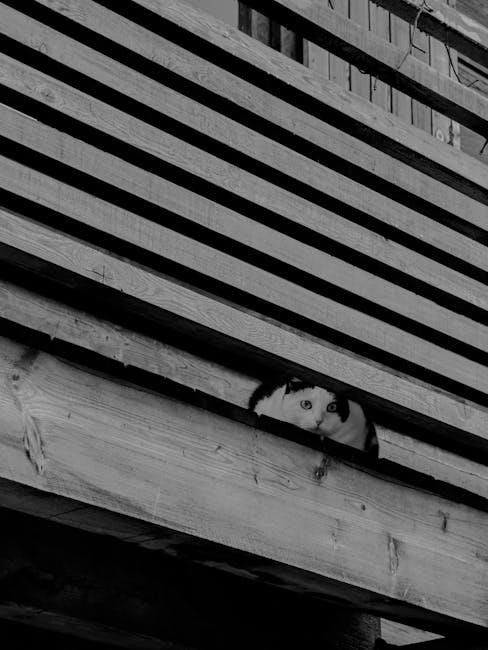
the black cat edgar allan poe pdf
Edgar Allan Poe’s “The Black Cat” is a chilling tale of guilt, paranoia, and cruelty, first published in 1843. This gothic masterpiece explores the darker aspects of human psychology through the narrator’s descent into madness, highlighting themes of superstition and the supernatural. The story’s eerie atmosphere and moral complexity have made it a cornerstone of Gothic literature, continuing to captivate readers with its haunting imagery and profound symbolism.
Publication Details
Edgar Allan Poe’s “The Black Cat” was first published on August 19, 1843, in The Saturday Evening Post. This short story is part of the public domain, making it widely accessible. A popular PDF version of the story was created by José Menéndez, offering a convenient and mobile-friendly format for readers. The PDF retains the original text’s eerie atmosphere and moral complexity, ensuring the story’s haunting appeal endures in modern formats. This version is often used for educational purposes, allowing students and literature enthusiasts to engage with Poe’s masterpiece seamlessly.
Historical Context of the Story
Written in 1843, “The Black Cat” reflects the mid-19th-century fascination with Gothic literature and the supernatural. During this era, themes of madness, guilt, and dark human impulses were prevalent in literary works. Poe’s story taps into cultural superstitions surrounding black cats, often seen as omens of bad luck or evil. The narrative also mirrors societal attitudes toward animals and violence, offering a critique of cruelty. Additionally, the story’s exploration of psychological decay aligns with the era’s growing interest in mental health. The PDF version by José Menéndez ensures this haunting tale remains accessible, preserving its historical and literary significance for modern readers.
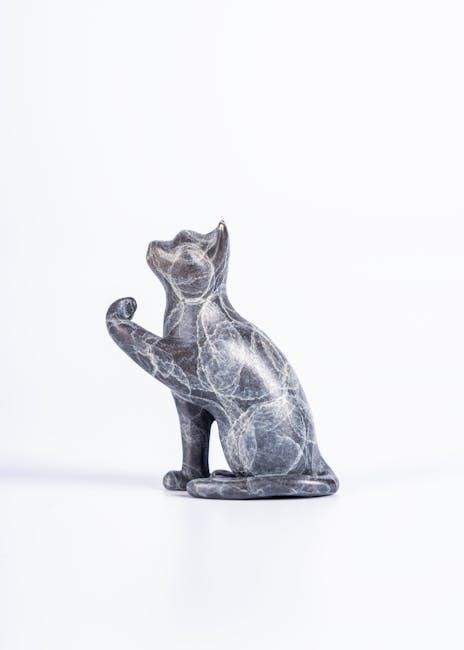
Plot Summary
The narrator’s initial happiness with his wife and pets unravels into alcoholism and cruelty, leading to the tragic death of his wife and the mysterious black cat.
The Narrator’s Initial Happiness and Love for Animals
The narrator begins by describing his deep affection for animals, which brings him joy and companionship. He shares this love with his wife, who also adores pets, creating a harmonious household filled with various animals. Among these, a black cat named Pluto stands out for its intelligence, loyalty, and beauty. The narrator and his wife cherish Pluto, who becomes a beloved companion, following the narrator everywhere. This idyllic relationship highlights the narrator’s initial kindness and his ability to form meaningful connections with animals, setting the stage for the tragic events that later unfold.
The Descent into Alcoholism and Cruelty
The narrator’s life takes a darker turn as he succumbs to alcoholism, leading to a gradual transformation in his character. His once gentle nature deteriorates, replaced by irritability and a growing disregard for those around him, including his pets. Pluto, once a cherished companion, becomes a target of the narrator’s escalating cruelty. This downward spiral is marked by brutal acts against the animal, driven by the narrator’s spiraling mental state and lack of self-control. His addiction fuels a perverse enjoyment of inflicting pain, highlighting the destructive power of unchecked vice and the blurred lines between sanity and madness.
The Death of the First Black Cat
The narrator’s cruelty reaches a tragic peak with the death of Pluto, his beloved black cat. One morning, in a cold-blooded act, he hangs the innocent animal from a tree. This horrific deed is justified by the narrator as a senseless act of malice, driven by his alcohol-fueled depravity. The event marks a turning point in the story, as it sets in motion a chain of haunting consequences. Pluto’s death symbolizes the narrator’s complete moral decay and serves as a catalyst for the eerie events that follow, deepening the story’s dark and foreboding atmosphere.
The Appearance of the Second Black Cat
The second black cat appears mysteriously, resembling Pluto in size and color, with a distinctive white patch on its chest. Its arrival unsettles the narrator and his wife, evoking a mix of fear and fascination. The cat’s presence seems ominous, as if it is a haunting reminder of the narrator’s past cruelty. The white mark on its chest, resembling a gallows, further intensifies the narrator’s growing paranoia and guilt. This eerie feline becomes a central figure in the unfolding tragedy, symbolizing both retribution and the supernatural forces at play in the narrator’s tormented life.
The Tragic Ending and the Discovery
The story reaches its harrowing climax when the narrator, driven by rage and guilt, kills the second black cat with an axe. His wife, attempting to intervene, is also struck and killed. In a fit of madness, the narrator entombs both his wife and the cat within the house. When the police arrive to investigate strange noises, they discover the wife’s decomposing body and the black cat perched ominously atop it. This ghastly revelation exposes the narrator’s heinous crimes, leaving him overwhelmed by the weight of his actions and the haunting presence of the cat, which seems to embody his guilty conscience.
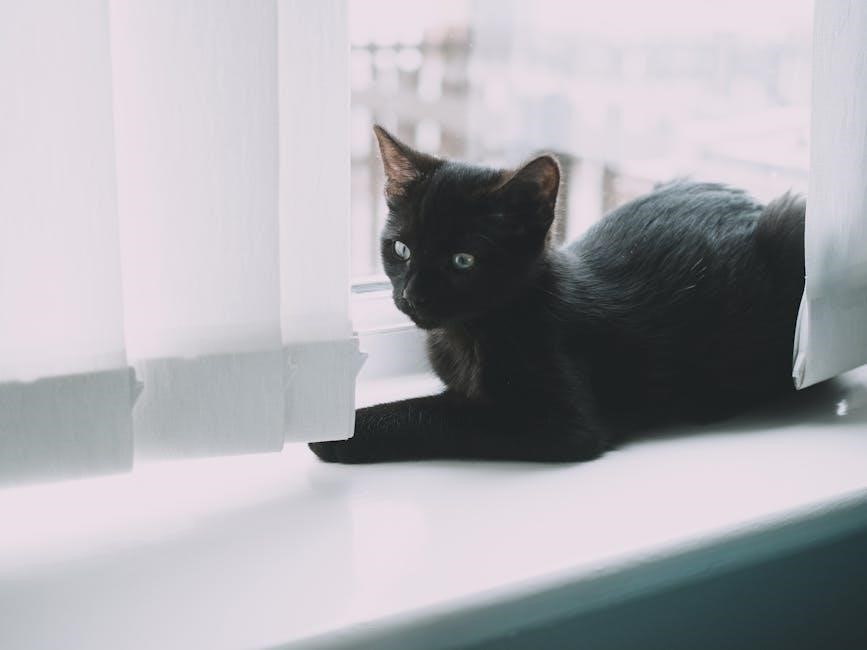
Character Analysis
The narrator, driven by alcoholism and madness, exemplifies moral decay, while the black cat symbolizes guilt and fate. His wife, though minor, embodies innocence lost.
The Narrator: A Psychological Profile
The narrator of “The Black Cat” is a deeply troubled individual, driven by alcoholism and a growing sense of moral decay. Initially, he presents himself as a lover of animals, but his psyche gradually unravels, revealing a dark propensity for cruelty and violence. His actions are motivated by a perverse sense of justification, often rationalizing his cruelty as a form of twisted self-control. The narrator’s downward spiral into madness is marked by paranoia, guilt, and a fractured sense of reality, ultimately leading to horrific consequences. His psychological deterioration is both chilling and fascinating, offering a grim exploration of the human psyche.
The Black Cat as a Symbol
The black cat in Poe’s tale serves as a powerful symbol, representing evil, bad luck, and the supernatural. Its presence is deeply intertwined with the narrator’s descent into madness and guilt. The cat’s mysterious behavior and eerie appearances symbolize the narrator’s inner turmoil and the consequences of his actions. The black cat also embodies the theme of cosmic irony, as its return after the first cat’s death haunts the narrator, symbolizing the inescapability of his crimes. Through the cat, Poe explores themes of moral decay and the haunting nature of guilt, making it a central and enduring symbol in Gothic literature.
The Narrator’s Wife and Her Role
The narrator’s wife plays a subtle yet significant role in the story, primarily through her shared love for animals and her superstitions about black cats. She is portrayed as a supportive and caring figure, whose fondness for Pluto initially strengthens the narrator’s bond with the cat. However, her presence also serves to highlight the narrator’s growing instability, as his descent into alcoholism and cruelty alienates him from her. Her beliefs about black cats being witches in disguise foreshadow the eerie events, adding depth to the narrative’s supernatural undertones. Ultimately, her role underscores the tragic unraveling of the narrator’s domestic life and sanity.
Themes and Symbolism
Guilt, paranoia, and the black cat’s symbolic dualism drive the narrative, exploring the darker aspects of human psychology and morality through eerie imagery and haunting symbolism.
Guilt and Paranoia
Guilt and paranoia are central themes in The Black Cat, as the narrator’s conscience torments him following the brutal act of hanging Pluto. His guilt intensifies when a second black cat appears, mirroring the first, and he becomes consumed by paranoia, interpreting the cat’s presence as a supernatural punishment. The narrator’s descent into madness is fueled by his inability to escape the consequences of his actions, symbolized by the cat’s relentless presence. Poe masterfully explores how guilt can unravel the human psyche, leading to self-destructive behavior and a downward spiral into irrational fear and madness.
The Symbolism of the Black Cat
The black cat in Poe’s tale serves as a powerful symbol of evil, bad luck, and the narrator’s guilt-ridden conscience. Pluto, the first black cat, represents innocence and loyalty, while its death and the appearance of a second black cat symbolize the narrator’s moral decay and descent into madness. The cat’s presence haunts the narrator, embodying his inner turmoil and the consequences of his cruel actions. The black cat also reflects the superstitions surrounding such animals, often associated with witchcraft and misfortune. Through this symbolism, Poe explores themes of guilt, paranoia, and the supernatural, creating a chilling narrative that lingers in the reader’s mind.
Cruelty to Animals as a Theme
Poe’s “The Black Cat” explores cruelty to animals as a reflection of the narrator’s moral decay and psychological unraveling. The narrator’s affection for Pluto initially highlights his kindness, but his descent into alcoholism leads to brutal acts of violence against the cat. The mutilation and eventual hanging of Pluto symbolize the narrator’s loss of humanity and his surrender to darker impulses. The appearance of the second black cat further emphasizes the theme, as the narrator’s cruelty revisits him in the form of guilt and paranoia. This theme underscores the destructive nature of unchecked emotions and the moral consequences of harming innocent beings.

Gothic Elements
The story features a dark, eerie atmosphere, supernatural occurrences, and tragic events, blending horror with elements of irony and coincidence to create a classic Gothic narrative.
The Dark and Eerie Atmosphere
The story is set in a dimly lit, eerie environment that amplifies the sense of dread and horror. Poe masterfully crafts a somber mood through descriptions of shadows, silent nights, and the haunting presence of the black cat. The narrator’s descent into madness is mirrored by the dark, oppressive atmosphere, creating a chilling backdrop for the unfolding tragedy. The eerie setting heightens the supernatural elements, making the reader feel the weight of guilt and paranoia that permeates the narrative. This foreboding atmosphere is central to the story’s gothic essence, immersing readers in a world of fear and moral decay.
The Use of Horror and the Supernatural
Edgar Allan Poe masterfully employs horror and supernatural elements in “The Black Cat” to evoke a sense of dread and unease. The black cat itself serves as a haunting symbol, embodying both evil and bad luck, while its mysterious reappearance after the narrator’s brutal act intensifies the supernatural aura. The narrator’s growing paranoia and belief in the cat’s haunting presence heighten the horror, blurring the line between reality and the supernatural. These elements work together to create a chilling narrative that explores the darker aspects of human nature and the unseen forces that may influence it, leaving readers with a lasting sense of fear and unease.
The Element of Irony and Coincidence
In “The Black Cat,” Poe skillfully weaves irony and coincidence to heighten the story’s dramatic tension. The narrator’s initial affection for Pluto contrasts starkly with his later cruelty, creating a tragic irony. The appearance of a second black cat, eerily similar to Pluto, serves as a coincidental twist that deepens the narrator’s guilt and paranoia. The ultimate discovery of the cat’s body in the walls, alongside his wife’s, underscores the ironic fate that befalls the narrator, tying together the threads of his descent into madness with the supernatural elements of the story, leaving readers with a sense of inevitable doom and moral reckoning.
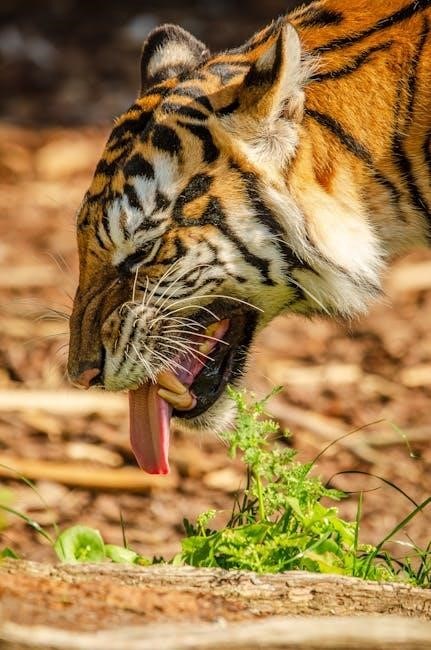
Cultural and Historical Context
“The Black Cat” reflects the dark, gothic themes prevalent in 19th-century American literature. Published in 1843, it captures the era’s fascination with death, guilt, and the supernatural, influenced by Poe’s personal struggles with alcoholism and loss, embedding it deeply in the cultural consciousness of Gothic storytelling.
The Significance of the Story in Gothic Literature
“The Black Cat” is a cornerstone of Gothic literature, exemplifying themes of horror, madness, and the supernatural. Its exploration of guilt and paranoia delves into the darker aspects of human psychology, a hallmark of Gothic storytelling. The black cat itself serves as a potent symbol, contributing to the eerie atmosphere that defines the genre. Poe’s ability to intertwine psychological complexity with chilling narratives has influenced countless works in Gothic literature. This story’s enduring impact lies in its ability to evoke fear and unease, solidifying its place as a seminal work in the genre and a testament to Poe’s mastery of dark storytelling;
The Role of Superstition in the Narrative
The Black Cat heavily incorporates superstition, particularly the belief that black cats are omens of bad luck or even manifestations of witchcraft. The narrator dismisses such superstitions at the beginning, yet they permeate the story, influencing events and the narrator’s mindset. The recurring appearance of the black cat, with its eerie presence and the white mark resembling a gallows, reinforces these superstitious undertones. This interplay between rationality and irrational fear heightens the tension, illustrating how superstition can shape perceptions and actions, even in a seemingly rational mind. The narrative thus explores the psychological impact of superstition on human behavior and decision-making.
Edgar Allan Poe’s Personal Life and Its Influence
Edgar Allan Poe’s tumultuous life significantly influenced his writing, particularly in “The Black Cat.” His early loss of parents, strained relationship with his foster father, and struggles with poverty and addiction mirrored the narrator’s downward spiral into alcoholism and cruelty. Poe’s personal experiences with loss, including the death of his young wife, Virginia, infused his work with themes of grief, guilt, and psychological instability. These elements are evident in the narrator’s erratic behavior and the eerie, haunting atmosphere of the story. Poe’s life thus shaped the narrative’s exploration of human darkness, making “The Black Cat” a reflection of his inner turmoil and existential struggles.
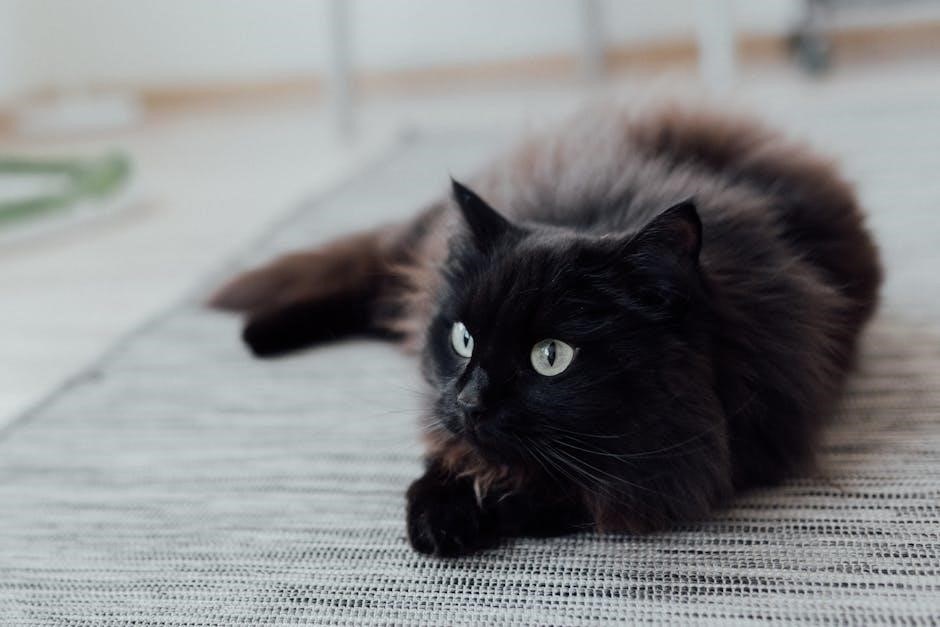
The Black Cat PDF Version
José Menéndez created a mobile-friendly, high-quality PDF of The Black Cat, enhancing its accessibility and popularity among modern readers.
The PDF Created by José Menéndez
José Menéndez’s PDF version of The Black Cat provides a modern, accessible format for readers to engage with Poe’s classic tale. The PDF preserves the original text’s eerie atmosphere and moral complexity, making it ideal for both casual readers and scholars. Menéndez’s work ensures that the story remains widely available, maintaining its place in Gothic literature while introducing it to new audiences. The PDF’s clear layout and readability enhance the storytelling experience, allowing readers to fully immerse themselves in the narrator’s chilling descent into madness and guilt.
Features of the PDF Version
The PDF version of The Black Cat offers a seamless reading experience with its mobile-friendly design, ensuring accessibility across devices. The high-quality formatting retains the original story’s integrity, with clear typography and proper spacing for readability. It includes the full text of Poe’s tale, allowing readers to explore the narrator’s psychological unraveling and the symbolic elements of the black cat. Additionally, the PDF is free to download, making it a convenient resource for educational purposes or personal enjoyment. Its simplicity and clarity make it an excellent choice for those seeking an unaltered digital version of Poe’s haunting narrative.
Accessibility and Popularity of the PDF
The PDF version of The Black Cat has gained significant popularity due to its ease of access and compatibility with various devices. Its mobile-friendly format allows readers to enjoy the story on smartphones, tablets, and laptops, making it a preferred choice for modern readers. The PDF is widely available online, often for free, contributing to its widespread accessibility. This accessibility has further enhanced its popularity, especially among students and educators, who utilize it for literary analysis and classroom discussions. The story’s enduring appeal, combined with the convenience of the PDF format, ensures its continued relevance in digital literature.
Edgar Allan Poe’s The Black Cat remains an enduring masterpiece, blending psychological complexity with timeless themes, ensuring its relevance in Gothic literature through accessible digital formats for modern readers.
The Lasting Significance of The Black Cat
Edgar Allan Poe’s The Black Cat remains a cornerstone of Gothic literature, its themes of guilt, paranoia, and the supernatural continuing to captivate readers. The story’s psychological depth and masterful suspense ensure its enduring relevance, while its exploration of human morality resonates across generations. The PDF version created by José Menéndez has made the tale more accessible, introducing its haunting narrative to modern audiences. Through its exploration of darkness and the human condition, The Black Cat solidifies Poe’s legacy as a master of macabre storytelling, ensuring its lasting significance in both literary studies and popular culture.
Impact on Readers and Literary Studies
Edgar Allan Poe’s The Black Cat has left an indelible mark on readers and literary studies, evoking profound emotional and psychological responses. Its exploration of guilt, paranoia, and the darker aspects of human nature continues to unsettle readers, sparking reflection on morality and the consequences of unchecked impulses. In literary studies, the story is celebrated for its masterful use of suspense, symbolism, and psychological complexity, often analyzed as a prime example of Gothic literature. The PDF version by José Menéndez has further popularized the tale, ensuring its accessibility and enduring relevance in both casual reading and academic discourse.